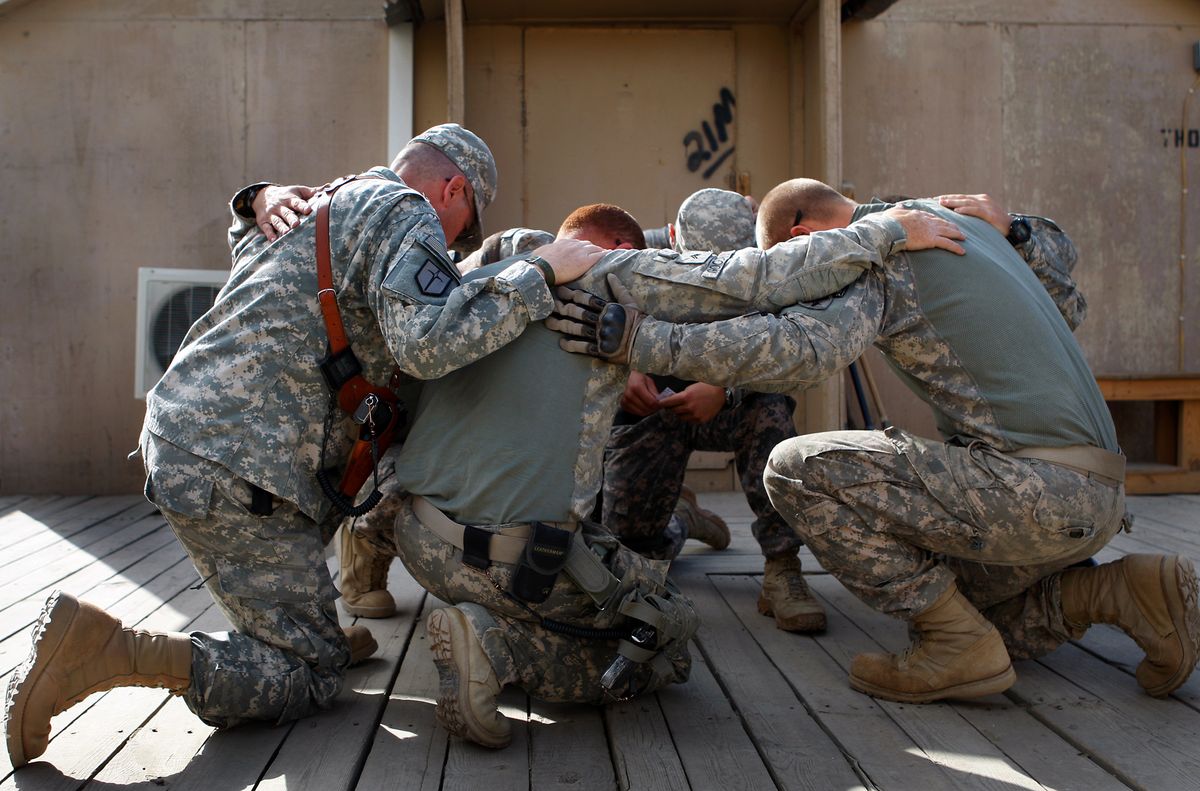In face of war, a fresh tactic crops up
Nebraska unit helps Afghan farmers

TARKMAH, Afghanistan – Master Sgt. Colin Jones grew up on a farm in Nebraska and earned a degree in farm and ranch management.
Now he’s gone back to Farming 101, having volunteered for military duty in Afghanistan, where he is helping drag crop practices out of the 19th century and forward to, say, 1940s America.
“You have to keep it simple and grounded,” Jones said one sunny morning in this picturesque village, where he talked about fertilizer, invasive weeds and beekeeping with one of the top farmers in the area, the weather-beaten Sher Agah.
Jones, 44, a calm straight-talker from Elkhorn, Neb., is part of the U.S. Army’s first agribusiness development team in Parwan province and three adjacent provinces in northeastern Afghanistan. On his sleeve is a cornstalk logo, the patch of Forward 28 ADT, a Nebraska National Guard unit.
Since October, Jones and six other specialists have bounced in armored vehicles along rutted roads to visit remote villages where farmers plow with oxen and plant seeds by hand. His team of volunteer guardsmen is here to help farmers increase yields, improve efficiency and modernize their growing and storage methods.
They have provided tractors, farm machinery and their own expertise. They’re building vineyards and greenhouses while teaching irrigation, fertilizing and planting. They also lecture at Kabul University.
“If we can help them feed themselves and sustain their families, maybe they won’t need the Taliban,” Jones said.
In a country where 80 percent of working-age males are small-scale farmers, such a program might seem central to the rebuilding effort. Yet the U.S. military has just 350 agricultural specialists in a nation of 31 million people, covering nine of 34 provinces.
Using military discretionary funds, Jones’ team operates in an obscure corner separate from America’s civilian-funded reconstruction effort, which since 2001 has cost $7.9 billion.
For years, the United States has focused on eradicating opium poppies, by far Afghanistan’s leading cash crop and foreign currency earner. Help for millions of subsistence farmers growing wheat, corn and other staples has been a lower priority.
The eradication program, called “a sad joke” by the director of the United Nations Office on Drugs and Crime, did nothing to prevent skyrocketing opium production after the fall of the Taliban regime in 2001.
In June, Richard C. Holbrooke, the U.S. special envoy to Afghanistan and Pakistan, called opium eradication “a waste of money” because it puts farmers out of work and drives them toward the Taliban. Holbrooke said eradication efforts would be phased out in favor of arresting major drug traffickers and promoting alternative crops.
Holbrooke also said U.S. civilian agriculture assistance to Afghanistan would increase from tens of millions of dollars a year to hundreds of millions.
Jones said he didn’t know whether any of that money would filter down to his military-funded team.
The Nebraska team operates in provinces where opium production is minimal because of the soil and climate conditions, so it isn’t involved in eradication efforts. Jones said he had provided seed corn and fertilizer to agriculture officials in southern Kapisa province, where some poppies are grown.
Mark Ward, a former official with the U.S. Agency for International Development who was responsible for Afghanistan and 25 other countries from 2004 to 2008, said agricultural assistance here suffers from what he called a disjointed, “scatter-gun” approach to foreign development aid. Coordination among agencies has been poor, he said. He considers the arrival of the Nebraska team a case of better late than never.
“If you just give the United States military a clear plan and vision, they’ll work wonders,” Ward said.
Because the team operates in a war zone littered with land mines and roadside bombs, security is a full-time preoccupation. To visit two farmers and take measurements for a new vineyard and greenhouse one day in June, a security plan had to be submitted seven days in advance.
The farm team took along 18 heavily armed guardsmen in four bomb-resistant vehicles, as well as a medic and Afghan interpreter. In all, 51 soldiers protect the seven agricultural specialists, who also carry weapons.
The goal of the Americans and the Afghan Agriculture Ministry is to let the Afghans take over farm assistance programs. But that is a long way off.
For now, the Nebraska team is trying to build relationships with key farmers – through what the military, in its infatuation with acronyms, calls KLEs, or key leader engagements.
One such figure is the skinny, stubble-faced Agah, who grows corn, carrots, beets, onions and tomatoes on 17 scrubby acres. The team members measured a plot for a vineyard and greenhouse they intend to build.
Then, before sitting down for tea and bread with Agah and his neighbors, they inspected 11 beehives they had given him.
While having tea, Agah asked whether they would pay him a salary for raising the bees. A small bridge across an irrigation canal on his property would be nice too, he suggested.
“God bless America,” he said, in English.
Jones, the sergeant from Nebraska, tried to be diplomatic. He told Agah that his team didn’t pay salaries or build bridges. But he would pass on the requests to a military provincial reconstruction teams in the area.
“These guys are smart,” Jones said later, after giving Agah a tin of Copenhagen tobacco. “They’ll try to play you – play you off each other. You have to make sure you coordinate (with other units).”
One need the team has identified is forage grasses. Cows here currently subsist on scrub and grass that is low in nutritional value.
The team performed germination tests on local seeds, using a decidedly low-tech method: seeds wrapped in wet paper towels tucked into plastic storage bags.
“Hey,” said one member of the unit. “This is Afghanistan.”